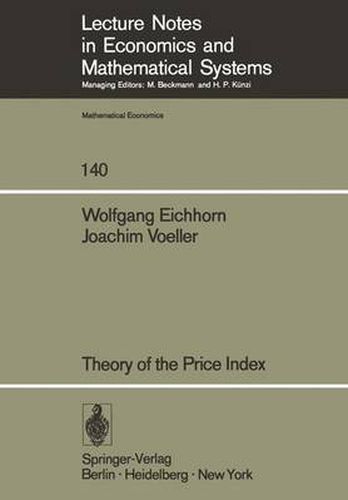Readings Newsletter
Become a Readings Member to make your shopping experience even easier.
Sign in or sign up for free!
You’re not far away from qualifying for FREE standard shipping within Australia
You’ve qualified for FREE standard shipping within Australia
The cart is loading…






This title is printed to order. This book may have been self-published. If so, we cannot guarantee the quality of the content. In the main most books will have gone through the editing process however some may not. We therefore suggest that you be aware of this before ordering this book. If in doubt check either the author or publisher’s details as we are unable to accept any returns unless they are faulty. Please contact us if you have any questions.
We wish to thank Georg Hasenkamp for valuable comments on an earlier draft of the manuscript and Steven Diamond for his kindness in reading the manu script and providing advice regarding the style of the exposition. We are also grateful to Miss Ingeborg Kasper for her careful typing of the manu script. Contents 1. Introduction 4 2. Price Indices Depending only on Prices 2. 1 Definition, Examples, Implications 4 2. 2 Characterizations of Pri~e Indices 15 3. Price Indices Depending on Prices and Quantities 22 3. 1 Definition, Examples 23 3. 2 Fisher’s System of Tests 29 3. 3 Implications and Characterizations 35 3. 4 Independence and Inconsistency of Fisher’s Tests 44 3. 5 General Solution of the Inconsistency Problem 54 4. Price Levels, Price Indices, and Fisher’s Equation 59 of Exchange 4. 1 Definition, Examples, Implications 60 4. 2 Characterizations of Price Levels 64 4. 3 Fisher’s Equation of Exchange Reconsidered 72 Bibliography 5. 83 6. Index 88 1. Introduction In the face of the economic, political, and social problems resul ting from world-wide inflation, theories of the price index have gained new attention. This newfound interest in price indices stems from the fact that all such indices are designed to serve as yardsticks for measuring the price behavior of goods and services. That is, all price indices relate to the concept of the ‘purchasing power of money’. If prices increase, then the value of the unit of money declines, i. e.
$9.00 standard shipping within Australia
FREE standard shipping within Australia for orders over $100.00
Express & International shipping calculated at checkout
This title is printed to order. This book may have been self-published. If so, we cannot guarantee the quality of the content. In the main most books will have gone through the editing process however some may not. We therefore suggest that you be aware of this before ordering this book. If in doubt check either the author or publisher’s details as we are unable to accept any returns unless they are faulty. Please contact us if you have any questions.
We wish to thank Georg Hasenkamp for valuable comments on an earlier draft of the manuscript and Steven Diamond for his kindness in reading the manu script and providing advice regarding the style of the exposition. We are also grateful to Miss Ingeborg Kasper for her careful typing of the manu script. Contents 1. Introduction 4 2. Price Indices Depending only on Prices 2. 1 Definition, Examples, Implications 4 2. 2 Characterizations of Pri~e Indices 15 3. Price Indices Depending on Prices and Quantities 22 3. 1 Definition, Examples 23 3. 2 Fisher’s System of Tests 29 3. 3 Implications and Characterizations 35 3. 4 Independence and Inconsistency of Fisher’s Tests 44 3. 5 General Solution of the Inconsistency Problem 54 4. Price Levels, Price Indices, and Fisher’s Equation 59 of Exchange 4. 1 Definition, Examples, Implications 60 4. 2 Characterizations of Price Levels 64 4. 3 Fisher’s Equation of Exchange Reconsidered 72 Bibliography 5. 83 6. Index 88 1. Introduction In the face of the economic, political, and social problems resul ting from world-wide inflation, theories of the price index have gained new attention. This newfound interest in price indices stems from the fact that all such indices are designed to serve as yardsticks for measuring the price behavior of goods and services. That is, all price indices relate to the concept of the ‘purchasing power of money’. If prices increase, then the value of the unit of money declines, i. e.